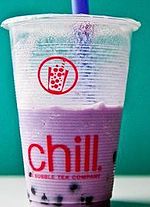Flatbreads
A casabe is a thin flatbread made from bitter cassava root without leavening. It was originally produced by the indigenous Arawak and Carib peoples because these roots were a common plant of the rain forests where they lived. In eastern Venezuela, many indigenous groups still make casabe. It is their chief bread-like staple. Indigenous communities, such as the Ye-Kuana, Kari-Ña, Yanomami, Guarao or Warao descended from the Caribe or Arawac nations, still make casabe.

Thin and crisp cakes of casabe are often broken apart and eaten like crackers. Like bread, casabe can be eaten alone or with other dishes. Thicker casabe usually are eaten slightly moistened. A sprinkle of a few drops of liquid is enough to transform a dry casabe into a very soft and smooth bread similar to the softest slice of a wheat bread loaf. Because of its capacity to absorb liquid immediately, casabe may cause someone to choke, but goes down quickly with a sip of liquid.
Tapioca Pearl
Tapioca pearls are also known as boba in some cultures. It is produced by passing the moist starch through a sieve under pressure. Pearl tapioca is a common ingredient in Asian dessertssuch as falooda, kolak, sago soup, and in sweet drinks such as bubble tea, fruit slush and taho, where they provide a chewy contrast to the sweetness and texture of the drink. Small pearls are preferred for use in puddings. In Brazil, the pearls are cooked with wine or other liquid to add flavor and are called sagu .
Large pearls are preferred for use in drinks. These pearls most often are brown, not white (and traditionally are used in black or green tea drinks), but today are available in a wide variety of colors. They are also available as an option in shave ice and hot drinks.

A casabe is a thin flatbread made from bitter cassava root without leavening. It was originally produced by the indigenous Arawak and Carib peoples because these roots were a common plant of the rain forests where they lived. In eastern Venezuela, many indigenous groups still make casabe. It is their chief bread-like staple. Indigenous communities, such as the Ye-Kuana, Kari-Ña, Yanomami, Guarao or Warao descended from the Caribe or Arawac nations, still make casabe.

Casabe baking in a small commercial bakery
Thin and crisp cakes of casabe are often broken apart and eaten like crackers. Like bread, casabe can be eaten alone or with other dishes. Thicker casabe usually are eaten slightly moistened. A sprinkle of a few drops of liquid is enough to transform a dry casabe into a very soft and smooth bread similar to the softest slice of a wheat bread loaf. Because of its capacity to absorb liquid immediately, casabe may cause someone to choke, but goes down quickly with a sip of liquid.
Tapioca Pearl
Tapioca pearls are also known as boba in some cultures. It is produced by passing the moist starch through a sieve under pressure. Pearl tapioca is a common ingredient in Asian dessertssuch as falooda, kolak, sago soup, and in sweet drinks such as bubble tea, fruit slush and taho, where they provide a chewy contrast to the sweetness and texture of the drink. Small pearls are preferred for use in puddings. In Brazil, the pearls are cooked with wine or other liquid to add flavor and are called sagu .
Large pearls are preferred for use in drinks. These pearls most often are brown, not white (and traditionally are used in black or green tea drinks), but today are available in a wide variety of colors. They are also available as an option in shave ice and hot drinks.
In addition to their use in puddings and beverages, a recent innovation has been to cook tapioca pearls inside cakes - Wikipedia

Taro flavored bubble teawith tapioca pearls
Biodegradable products
Tapioca root can be used to manufacture biodegradable bags developed from a tapioca resin of the plant as a viable plastic substitute. Not only is it biodegradable, but it can be composted, is renewable, reusable, recyclable and sustainable. Other tapioca resin products include reusable gloves, capes and aprons.
Biodegradable products
Tapioca root can be used to manufacture biodegradable bags developed from a tapioca resin of the plant as a viable plastic substitute. Not only is it biodegradable, but it can be composted, is renewable, reusable, recyclable and sustainable. Other tapioca resin products include reusable gloves, capes and aprons.





No comments:
Post a Comment